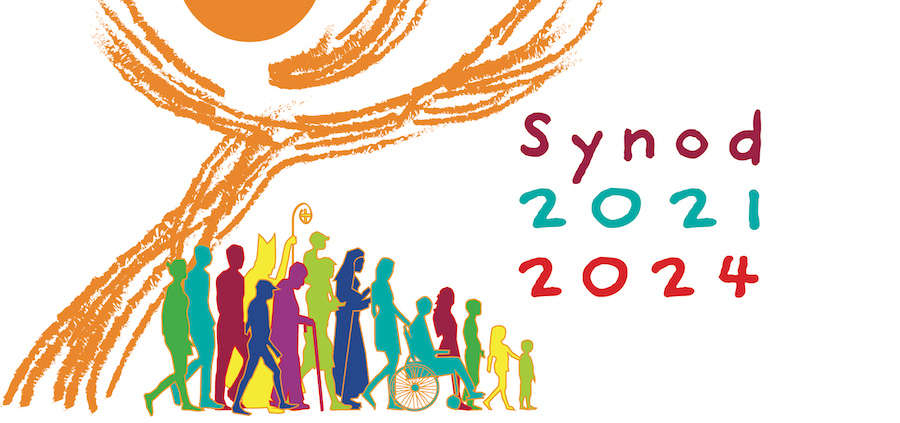Synod delegate reflects on “courageous” discussions at October assembly by Michael Centore
Helena Jeppesen-Spuhler, Synod delegate from Switzerland and program officer for the Swiss Catholic Lenten Fund, was the featured guest at a Global Ecclesial Synodal Council gathering hosted by Catholic Church Reform International (CCRI) on Saturday, March 23.
CCRI director Rene Reid introduced Jeppesen-Spuhler as “a strong advocate for equal rights for women.” Jeppesen-Spuhler is one among the historic group of 54 women with full voting privileges at the Synod. She was a member of the European Continental Synodal Assembly in Prague in February 2023, and was one of 10 non-bishop delegates from that assembly selected by Pope Francis to participate in October’s global gathering in Rome.
“I see it as a part of my task as a member of the Synod to bring back what we discussed during the Synod, to make sure that there is this circularity,” she told attendees.
Reflecting on her experience of the Synod, she said, “The most courageous part of this Synod was the discussion on the role of women in the church.” She observed that women served as moderators during the plenary discussions of a bishops’ synod for the first time in history.
“It was a change for those bishops and cardinals who have already participated in many synods,” she said. She noted that many bishops made “courageous statements” about the role of women in the church during the plenary sessions.
Though “the bishops and cardinals are used to their style of synod” and female delegates “had to find the courage to talk,” Jeppesen-Spuhler said that two key differences from previous synods helped facilitate the dialogue process: the use of round tables that “forced us all to look at each other” and the skills of professional moderators who guided the small-group discussions.
There were 10 to 12 delegates around each table. In her first group, Jeppesen-Spuhler reported that she was one of two women, and the remaining 10 delegates were all bishops or cardinals.
The fact that all participants had the same amount of time to respond to each discussion question—around four minutes, whether they were a cleric or a layperson—created a less hierarchical environment, she said. Laypeople were “on the same level as the cardinals and bishops.”
“We could sense that that was a really special experience for some cardinals,” she continued. “We were all around the table. That was a good challenge. We were in a way forced to listen to each other.”
Jeppesen-Spuhler said that one cardinal told her that “this was the best synod because the people of God were there.”
Additionally, the method of “Spiritual Conversation” employed by the Synod graced the delegates with periods of silence and reflection. These moments “gave a special atmosphere” to the proceedings, she said.
“What touched me or impressed me” was “not just discussion,” she added, but “a special way to sense somehow also what is the voice of the Spirit in our conversation.”
Even so, she acknowledged some stressful moments during the discussions, particularly around “questions of inclusion” in the church.
“We have to do steps as the Catholic Church” toward inclusion, she said, but stressed that “we are a super diverse Catholic Church” where different local churches have different needs and challenges.
“[Inclusion] is not a topic we can resolve in the universal church. We can only find pastoral solutions in the local churches,” she said. She noted that this approach is “very much in line with Pope Francis,” who “sees the necessity of taking decisions at different levels” and giving more decision-making power to lower levels of the church hierarchy.
Asked to elaborate on the place of small Christian communities (SCCs) in the Synod’s Synthesis Report, Jeppesen-Spuhler responded that “the question is more the relation between parishes and leadership of the parish with small Christian communities.”
She shared that there was substantial discussion about formation of priests for a synodal church. Formation of priests and laypeople is one approach, but it “has to lead to structural changes,” she said.
“A synodal church requires different structures” and “a change of culture and structure,” she added.
As examples of structural changes, Jeppesen-Spuhler mentioned the “obligatory nature of Pastoral Councils in Christian communities and local churches” referenced in the Synthesis Report (18.h).
She also mentioned “parish leaders” in Latin America and Switzerland who are empowered to give homilies, facilitate baptisms, assist with weddings, and perform other pastoral tasks due to shortages of priests in those regions. She cited this emerging ministry as an example of how “the practice will change the teaching of the church.”
Reid concluded the conversation by asking Jeppesen-Spuhler if she felt the Synod “got results.” Jeppesen-Spuhler said that she “expected opposition to the principle of synodality” but was happy to find the opposite to be true.
“The assembly was open to discuss decision-making processes in a synodal church,” she said. “The Synod clearly said we want a synodal church. That’s already an important step.” ♦
Michael Centore is the editor of Today’s American Catholic.





Leave a Reply
Want to join the discussion?Feel free to contribute!